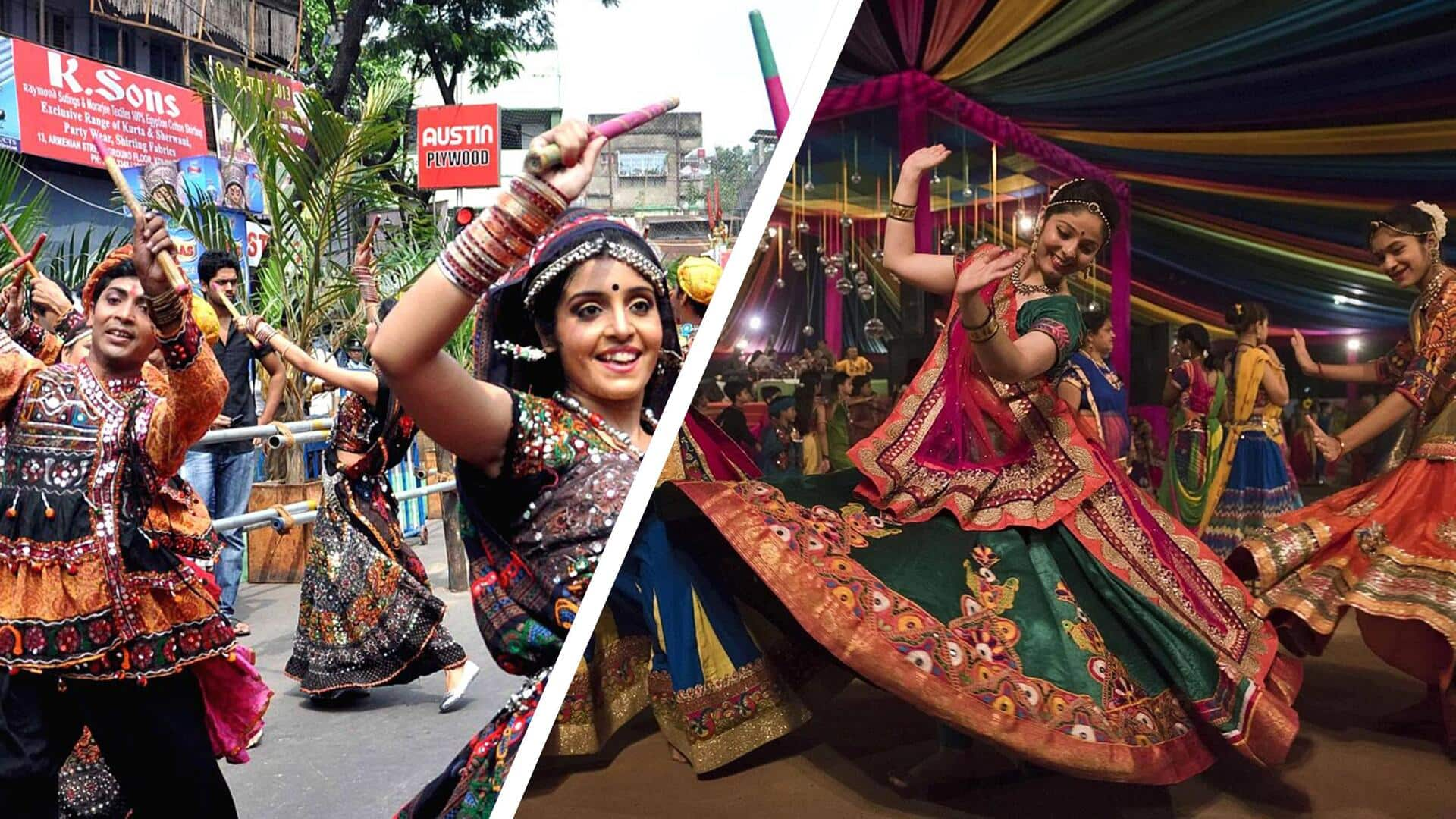
Dandiya v/s Garba: Unveiling their unique charms
What's the story
Originating from Gujarat, garba and dandiya are commonly associated with the Navratri, when people celebrate the triumph of good over evil. At first glance, garba and dandiya might seem similar due to their lively, rhythmic movements. However, a closer examination reveals distinct styles, rhythms, and occasions for their performance. Let's discover the intricacies that make them two vibrant threads in India's cultural fabric.
Significnace
Symbolic of the battle between Goddess Durga and Mahishasura
Both dances symbolize the battle between Goddess Durga and the demon king Mahishasura. In Dandiya, the colorful sticks represent the Goddess' sword, while Garba centers around a Durga statue or lamp-lit pot, symbolizing life in the womb. The circular movement represents the life cycle, with Goddess Durga remaining invincible. Garba shares similarities with Sufi dances, featuring dancers moving in a spiral.
Garba
Garba is performed before 'aarti'
Garba, characterized by its devotional appeal, is performed to the melodious strains of bhajans and hymns. It holds a solemn place in the pre-aarti rituals, where devotees come together to express their reverence to the Goddess. The dance, marked by hand and foot movements, occasionally involves clapping as a rhythmic accompaniment. It can be performed by any number of dancers in a group.
Dandiya
Dandiya requires an even number of participants
Dandiya is typically enjoyed in the late evenings after the aarti. It reflects a more celebratory spirit and this dance involves the use of colorful dandiya sticks, creating an exuberant and energetic atmosphere. Unlike Garba, Dandiya requires an even number of participants, and its songs are focussed on Krishna Leela and his joyful dances with Radha and the gopis.
Womanhood
Celebrating womanhood, Garba pays tribute to nine forms of Durga
Garba and Dandiya are widely believed to symbolize the battle between Goddess Durga and Mahishasura, culminating in her victory. Garba celebrates womanhood, fertility, and reveres the nine forms of the Goddess. Typically performed in a circular pattern surrounding a lamp or Shakti statue, Garba embodies devotion. Dandiya follows a similar pattern but lacks a defined center, contributing to the celebratory atmosphere of the dance.